- Home
- People
- Research Facilities
- Experimental Facilities
- Computational Facilities
- Publications
- Research Projects
- Links
- Contacts
- Research Facilities
- Experimental Facilities
- Instruments
Particle Monitoring Instruments
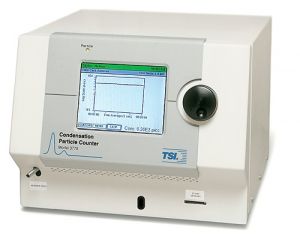
TSI 3775 Condensation Particle Counter (CPC) is a general purpose particle counter that can detect airborne particles down to 4 nm in diameter and uses n-butyl alcohol (butanol) as a working fluid. Measurement range spans between 0 to 107 particles per cubic centimeter. In this CPC an aerosol sample is drawn continuously through a heated tube where butanol is vaporized and diffuses into the aerosol sample stream. The aerosol sample and butanol vapor is then cooled so that the butanol vapor becomes supersaturated and ready to condense on the existing particles. Once condensation begins, particles quickly grow into larger droplets and pass through an optical detector where they are counted easily.
Manual: cpc-3775r.pdf
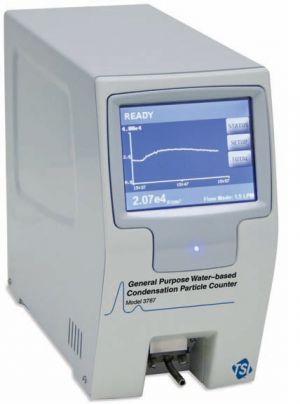
This CPC can detect airborne particles down to 5 nm in diameter utilizing state-of-the art water based condensation particle counting technology. The GP-WCPC draws in an air sample and counts the number of particles in that sample to provide a particle concentration value that is displayed as the number of particles detected per cubic centimeter of sampled air. It uses a patented technology to condense water vapor onto particles, growing them into droplets which are then detected by a conventional optical counting system. The stream of aerosol particles is uninterrupted and follows a laminar flow path from the sample inlet to the optical detector.
Manual: not available
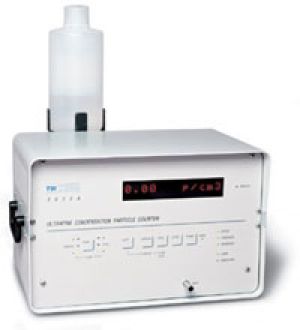
This counter is built to minimize particle losses and is capable of measuring the number concentration of submicrometer airborne particles that are larger than 3 nanometers in diameter. The particles are detected and counted by a simple optical detector after a supersaturated vapor condenses onto the particles, causing them to grow into larger droplets. The range of particle concentration detection extends from less than 0.01 particle cm-3 to 9.99 × 104 particles cm-3.
Manual: TSI3025A.pdf
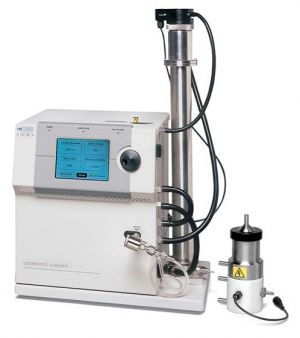
The Model 3080 Electrostatic Classifier can be used with either Differential Mobility Analyzer (DMA): Long or Nano, as the main component for generating or sizing aerosols. Given a polydisperse input aerosol, the instrument output can be a stream of monodisperse aerosol of known particle size (particle electrical mobility).
In an aerosol generation system, the Electrostatic Classifier selects aerosol particles of uniform size from a polydisperse source, resulting in a highly monodisperse aerosol. The Long DMA offers classification in the range from 10 to 1000 nm in diameter. The Nano DMA offers classification from 2 to 150 nm in diameter.
In a particle sizing system, the Electrostatic Classifier separates particles by size for high-resolution measurements of particle size distribution. When used in TSI Scanning Mobility Particle Size (SMPS) spectrometers, for example, monodisperse aerosol exiting the Electrostatic Classifier passes to a Condensation Particle Counter (CPC), which measures particle number concentration. By scanning quickly through a portion of the size range from 2 to 1000 nm (size range varies by SMPS configuration), the SMPS measures the size distribution of the aerosol precisely.
Manual: 1933792h-3080.pdf
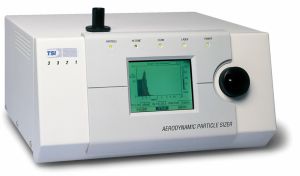
It provides accurate count size distributions for particles with aerodynamic diameters from 0.5 to 20 μm. It detects light-scattering intensity for particles from 0.3 to 20 μm. Τhis mode1 is specifically engineered to perform aerodynamic size measurements in real time using low particle accelerations. Time-of-flight particle sizing technology involves measuring the acceleration of aerosol particles in response to the accelerated flow of the sample aerosol through a nozzle. The aerodynamic size of a particle determines its rate of acceleration, with larger particles accelerating more slowly due to increased inertia. As particles exit the nozzle, the time of flight between the Model 3321s two laser beams is recorded and converted to aerodynamic diameter using a calibration curve.
Manual: APS-3321.pdf
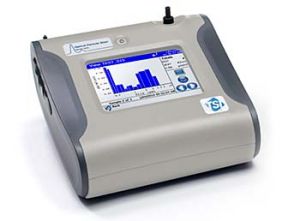
TSI Model 3330 was designed to provide optimal resolution over the size range of 0.3 to 10 μm. The sample aerosol is pulled straight into the measurement region of the OPS to reduce particle losses due to transport. A sheath flow surrounds the sample, focusing the aerosol to enhance size resolution, and keeping the optics clean for improved reliability and low maintenance. The flow rates in the OPS are carefully controlled using real-time feedback to ensure concentration accuracy. The temperature and humidity of the sample is measured and recorded. In the optical chamber, the aerosol crosses a laser beam, creating a light pulse. The intensity of the flash is used to count and size the particles.
Manual: not available

The Model 8530 of DustTrak aerosol monitor is a single-channel, light-scattering laser photometer that provides real time mass concentration of aerosols. It uses a sheath air system that isolates the aerosol in the optics chamber to keep the optics clean for improved reliability and low maintenance. The DustTrak II Aerosol Monitor measures aerosol contaminants such as dust, smoke, fumes, and mists.
Manual: DustTrak II Aerosol Monitor Model 8530/8531/8532/8530EP (brj.dk)
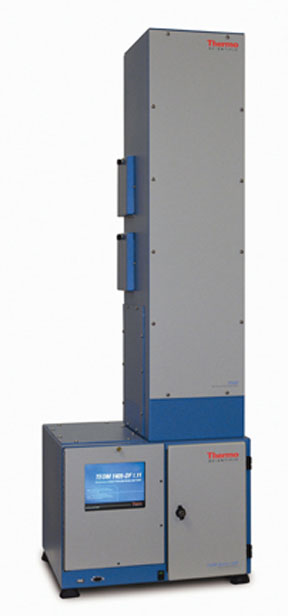
The Thermo Scientific Ambient Particulate Monitor, TEOM 1405-DF simultaneously measures PM10, PM2.5 and PMCoarse (PM10-2.5) mass concentration as it exists in the ambient air. The 1405-DF system is composed of two Filter Dynamics Measurement Systems (FDMS) and two TEOM mass sensors housed in a single cabinet, network-ready configuration that includes the control system with touch screen user interface. It also provides representative short and long term reading of the ambient PM concentration, even in the presence of volatile materials. Finally, it utilizes a direct mass measurement that is not subject to measurement uncertainties found in surrogate techniques such as beta attenuation, light scattering and pressure drop.
Manual: not available
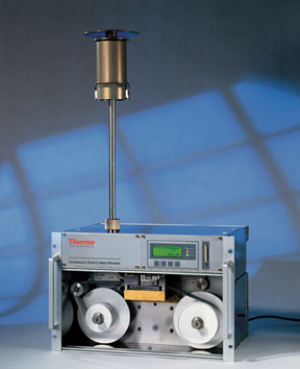
Multi-Angle Absorption Photometer measures the absorption of elemental carbon in ambient particles. The portion of elemental carbon to be found in ambient air is determined applying a method which is based on a combination of the reflectometer method at certain scattering angles and the transmission. It serves to continuously measure and monitor the particulate pollutant species black carbon expressed as mass concentration (ng m-3) in a continuous operating environment.
Manual: not available
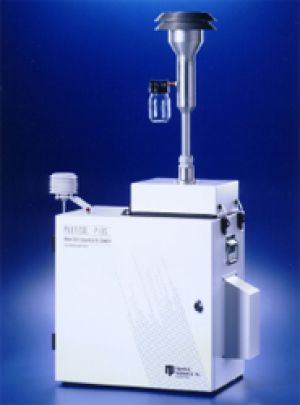
Aerosol sampler based on the US EPA Federal Reference Method for PM2.5 sampling (RFPS-0498-117) and PM10 sampling (RFPS-1298-126). The Partisol-FRM PM2.5 Sampler is a single-filter, stand-alone unit for the manual sampling of PM2.5 in ambient air. For PM2.5 US EPA reference method sampling, the system is equipped with the US EPA designed PM2.5 inlet system, which includes the PM2.5 WINS impactor or the Very Sharp Cut Cyclone (VSCC). For PM10 US EPA reference method sampling, the system is equipped with the classical Thermo PM10 inlet. High-quality, molded filter cassettes house 47 mm filters, and are installed in a convenient filter cassette carrier.
Manual: FRM Operating Manual.pdf
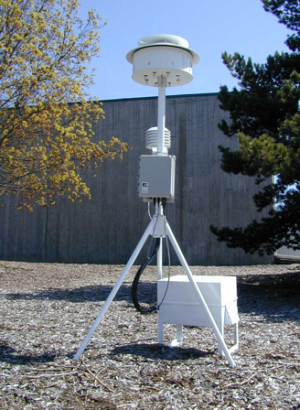
They are ambient aerosol samplers that can collect multiple samples. The basic SASS accommodates up to five (5) sampling canisters while the SuperSASS accommodates eight (8) sampling canisters used in groups of up to four. The SASS has active flow control on canisters 1 thru 3 with canisters 4 and 5 using a critical orifice for flow setting. The SuperSASS can operate in groups, each with active flow control. In both systems, each individual canister has its own PM2.5 sharp cutoff cyclone inlet; denuder ring and tandem 47 FRM filter holders. As such, each canister contains all necessary components for excluding particles above 2.5 µm, for removing interfering gases, and for collecting ambient fine particles.
Manual: MetOneSOPSASS-9800RevD.pdf

The Sunset Laboratory Carbon Aerosol Analyzer is a thermal optical analyzer for bulk organics and elemental carbon. It uses a proven thermal-optical method to analyze for organic and elemental carbon aerosols collected on quartz filters. The samples are thermally desorbed from the filter medium under an inert helium atmosphere followed by an oxidizing atmosphere using carefully controlled heating ramps. A flame ionization detector (FID) is used to monitor the analysis.
Manual: not available
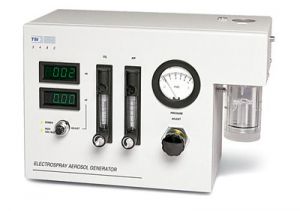
The Model 3480 Electrospray Aerosol Generator produces stable, monodisperse, submicrometer aerosol in the range from less than 3 to greater than 100 nanometers. It achieves such small diameters by moving a conductive liquid solution or suspension through a capillary and applying an electrical field to the liquid at the capillary tip. The electrical field draws the liquid from the tip into a conical jet from which ultrafine charged droplets are emitted. Air and CO2 are merged with the droplets, and the liquid evaporates while the charge is neutralized by an ionizer. The result is a neutralized, monodisperse aerosol that is practically free of solvent residue.
Manual: not available
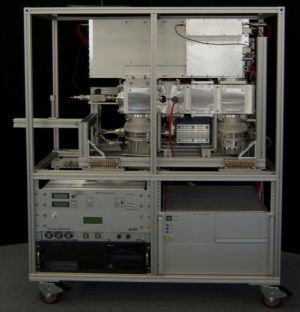
The Aerodyne aerosol mass spectrometer (AMS) is capable of providing quantitative size and chemical mass loading information in real-time for non-refractory sub-micron aerosol particles. The HR-TOF AMS has the capacity of producing near on-line mass loadings of non-refractory (NR; any chemical species which vaporizes at 600 ˚C) chemical species, through flash vaporization (impaction on a resistively heated tungsten surface) in combination with electron impact ionization (EI ionization by 70 eV electrons) and Time-Of-Flight mass spectrometry. In addition, particle diameters can be simultaneously measured by means of Particle Time Of Flight, facilitating chemically resolved size distributions.
Manual: AMS-Manual-Latest

The Sievers 900 Total Organic Carbon Analyzer measures with high sensitivity the concentration of total organic carbon (TOC), total inorganic carbon (TIC), and total carbon (TC) in liquid or water samples. The operation of the analyzer is based on the oxidation of organic compounds to form carbon dioxide (CO2) using UV radiation and a chemical oxidizing agent. Carbon dioxide is then measured by a sensitive, selective membrane-based conductometric detection technique. For every measurement, the concentration of inorganic carbon species is determined and, after oxidation of the organic compounds, the total carbon (TC) content of the sample is measured. The concentration of the organic compounds is then calculated from the difference between the concentrations of TC and TIC.
Manual: O&M.book (acmerevival.com)

The AAC is an ideal instrument for generating a truly monodisperse aerosol from a polydisperse source. This aerosol instrument is capable of classifying particles between 25 nm and up to 5 μm. It transmits particles of a selected aerodynamic diameter by balancing opposing centrifugal and drag forces, allowing the selected particles to be carried by the sheath flow to the outlet. This principle of aerosol selection or classification is independent of the charge state and produces a true monodisperse aerosol output, with a high transmission efficiency limited only by diffusion and impaction losses.
Manual: not available
The Dry-Ambient Aerosol Size Spectrometer monitors the size distribution of dried and ambient particles via a system of solenoid valves. Low RH (<30%) is achieved by sampling ambient air through a system of Nafion dryers prior 20 to measurement by an SMPS (TSI 3936L).
Manual: not available
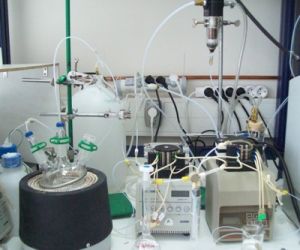
The steam sampler is a custom made semi continuous instrument that involves the steam jet aerosol collector, two Methohm ion chromatographs and a system of peristaltic pumps. The purpose of the steam sampler is to accurately measure the chemical composition of water soluble inorganic compounds of aerosols.
Manual: not available
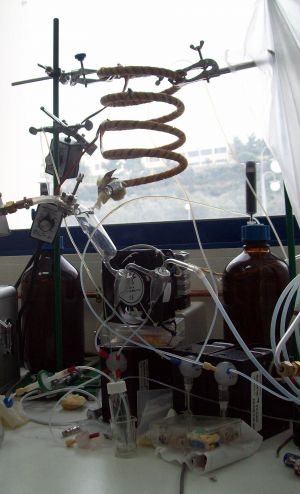
A Continuous Water Soluble Organic Carbon is under development. The monitor consists of the steam jet aerosol collector, a SIEVERS 900 portable TOC analyzer that measures the water soluble organic fraction of aerosols.
Manual: not available
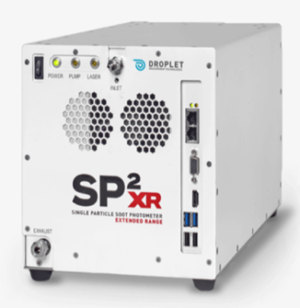
The Single Particle Soot Photometer-Extended Range (SP2-XR) delivers accurate, size-resolved single particle measurements of black carbon mass and size with real-time, direct output suitable for monitoring applications and field research. The SP2-XR uses a high optical power intracavity Nd:YAG laser for the direct measuring of refractory black carbon (rBC) in individual particles. Light absorbing particles, mainly rBC, absorb energy and are heated to the point of incandescence. The energy emitted during incandescence is measured and a quantitative determination of black carbon mass of the particle is made.
Manual: Manual, Temp Control and Flow Measurement Box (netdna-ssl.com)
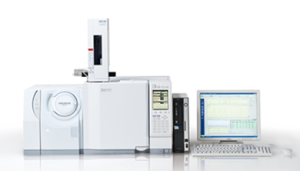
The GCMS-QP2010 is a high cost-performance gas chromatograph/mass spectrometer intended for high-precision Gas Chromatography/Mass Spectrometry (GC/MS) analysis. The instrument separates chemical mixtures (the GC component) and identifies the components at a molecular level (the MS component). It is one of the most accurate tools for analyzing environmental samples, working on the principle that a mixture will separate into individual substances when heated. The heated gases are carried through a column with an inert gas (such as helium). As the separated substances emerge from the column opening, they flow into the MS. Mass spectrometry identifies compounds by the mass of the analyte molecule.
Manual: Shimadzu-GCMS-QP2010-UsersGuideVer2.5.pdf (cuny.edu)

The Aethalometer AE43 provides a real time readout of the concentration of Black Carbon (BC) and Brown Carbon (BrC) aerosol particles in air stream. These particles are emitted from all types of combustion, most commonly from diesel exhaust. The Aethalometer draws the sample air stream through a filter tape. Aerosol collection is performed on two spots on the tape simultaneously at different flow rates and is illuminated by a multi-wavelength light source. Detectors measure the attenuation of light by the absorbing components of the aerosol, relative to a reference through an un-exposed portion of the tape. The filter tape advances on a time schedule, or when a pre-set loading limit is reached.
Manual: not available
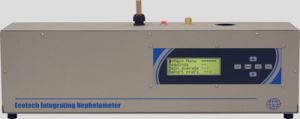
The Aurora 2000 PM Correlating Nephelometer measures continuously and in real-time, aerosol light scattering and derive particulate concentrations in a sample of ambient air using a single wavelength and a BETA monitor.
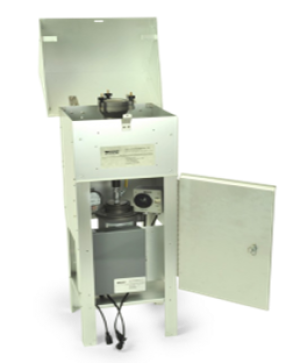
The Polyurethane Foam (PUF) high volume air sampler is used to collect airborne particulate and vapor contaminants accurately and at flow rates up to 220 liters per minute. A dual chambered aluminum sampling module contains both filtering systems. Airborne particulates are collected onto the filter paper media and the vapor elements onto a piece of polyurethane foam in the lower chamber of the sampling module.
Manual: not available
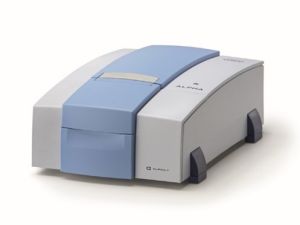
Fourier Transform Infrared Spectroscopy (FTIR) is a widely used technique for rapid material identification. FTIR technique is used to obtain an infrared spectrum of absorption or emission of a solid, liquid or gas. The ALPHA FT-IR Spectrometer offers all the capabilities to achieve an easy routine analysis. It provides the ability to collects simultaneously high-resolution spectral data over a wide spectral range.
Manual: not available
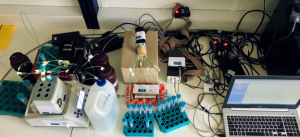
Reactive oxygen species (ROS) are a class of oxygen-containing molecules that have one or more unpaired electrons making them highly reactive. The imbalance between cellular ROS and antioxidants in a human body can lead to oxidative stress. ROS system is a newly developed system which is used for the measurement of oxidative potential (OP) - the inherent ability of ambient particles or particle-bound components to generate ROS. This custom-made system is semi-automated, uses programmable syringe pumps and is based on an acellular method known as the dithiothreitol (DTT) assay.
Manual: not available
The ADI 2081 Particle-into-Liquid Sampler (PILS) can be used as preconditioning unit for several analytical applications in ambient or industrial environment, determining the bulk chemical composition of ambient aerosol particles. The instrument consists of two units. The first one is an aerosol extraction unit where particles are passed through a growth chamber saturated with water vapor. Liquid droplets are grown, and the resulting liquid is collected and transferred to the detection system. The second unit is the detection system which can include ion chromatographs (IC) or a total organic carbon detector (TOC).
Manual: not available

A thermodenuder (TD) is an instrument used in thermal evaporation studies. A TD usually consists of two sections: the heating section where volatile particle components evaporate, leaving behind the less volatile species in the particulate phase, and the cooling section (denuder). The second one often contains activated carbon to prevent vapor re-condensation. TDs are used to generate thermograms, particle mass fraction remaining (MFR) as a function of TD temperature.
Manual: not available
Gas Monitoring Instruments
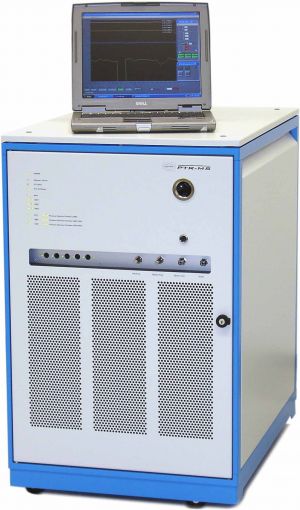
A proton Transfer Reaction – Mass Spectrometer allows the simultaneous online monitoring of volatile organic compounds (VOCs) like acetone, acetaldehyde, methanol, ethanol, benzene, toluene, xylene and others present in concentrations down to <30 pptv in ambient air. Proton transfer reaction is a chemical ionization process that offers a very efficient ionization for most VOCs at reaction rates of approximately 2x10-9 cm3 s-1. Since proton transfer is a soft ionization method the fragmentation rates can be kept very low.
Manual: not available
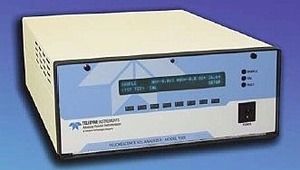
The Model 100EU Low Level SO2 Analyzer uses the proven UV fluorescence principle, coupled with state of the art microprocessor technology to provide accurate and dependable measurements of low level SO2.
Manual: not available
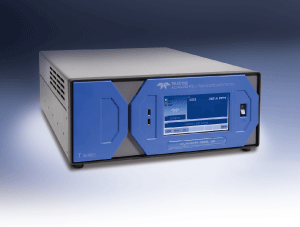
The Model T360 CO2 analyzer measures Carbon Dioxide by comparing infrared energy absorbed by a sample to that absorbed by a reference gas according to the Beer-Lambert law. Using a Gas Filter Correlation Wheel, a high-energy IR light source is alternately passed through a CO2 filled chamber and a chamber with no CO2 present. The light path then travels through the sample cell, which has a folded path of 2.56 meters. The energy loss through the sample cell is compared with the reference signal provided by the filter wheel to produce a signal proportional to concentration, with little effect from interfering gases within the sample.
Manual: not available
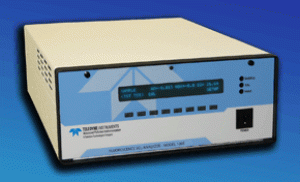
The Model 300E measures low ranges of carbon monoxide by comparing infrared energy absorbed by a sample to that absorbed by a reference gas according to the Beer-Lambert law. This is accomplished with a Gas Filter wheel which alternately allows a high energy light source to pass through a CO filled chamber and a chamber with no CO present. The light path then travels through the sample cell, which has a folded path of 14 meters.
Manual: not available
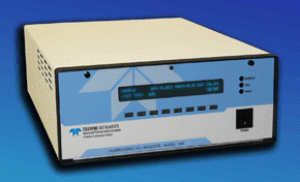
The Model 400E UV Absorption Ozone Analyzer is a microprocessor-controlled analyzer that uses a system based on the Beer-Lambert law for measuring low ranges of ozone in ambient air. A 254 nm UV light signal is passed through the sample cell where it is absorbed in proportion to the amount of ozone present. Every three seconds, a switching valve alternates measurement between the sample stream and a sample that has been scrubbed of ozone.
Manual: not available
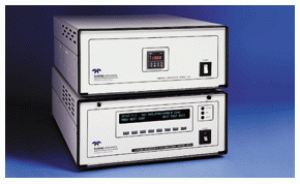
The Model 201E NH3 analyzer measures ambient ammonia in selectable ranges from 0-50 ppb to 0-2,000 ppb using the chemiluminescence principle and an external ammonia converter and sampling system. Ammonia is difficult to measure accurately because of a tendency to be absorbed into other materials. The “stickiness” of the gas results in slow response times and inaccurate concentration values. The sample gas is passed through the M501NH converter, which converts NH3 and other compounds to NO, producing the total oxides of nitrogen (TNx). In the next cycle the sample is routed through a molybdenum converter which converts nitrogen oxides (less NH3) to NO, producing the Tn reading. The difference between these readings (TNx – TN = NH3) provides a reading proportional to the NH3 concentration.
Manual: not available
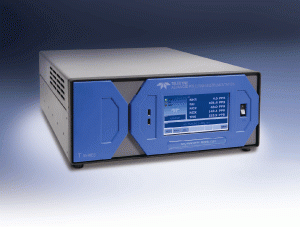
The Model T201 combines a specially configured chemiluminescence analyzer with an external thermal converter to give stable and repeatable NH3 measurements at very low levels. In addition, the T201 provides simultaneous values for NO, NO2, and NOx concentrations.
Manual: not available
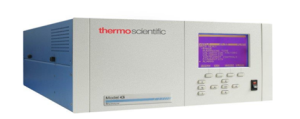
The Model 43i-TLE SO2 Analyzer is a pulsed fluorescence gas analyzer known for superior accuracy, sensitivity and reliability in trace-level ambient applications. The analyzer provides accurate and dependable measurements of low level SO2, down to 50 ppt.
Manual: Microsoft Word - 43i-TLE_102780-00_16May2015.doc (thermofisher.com)

